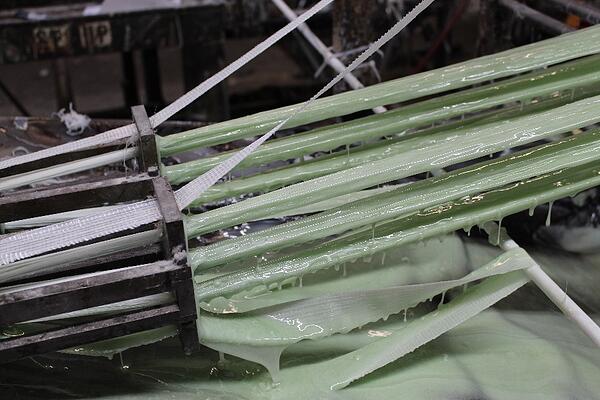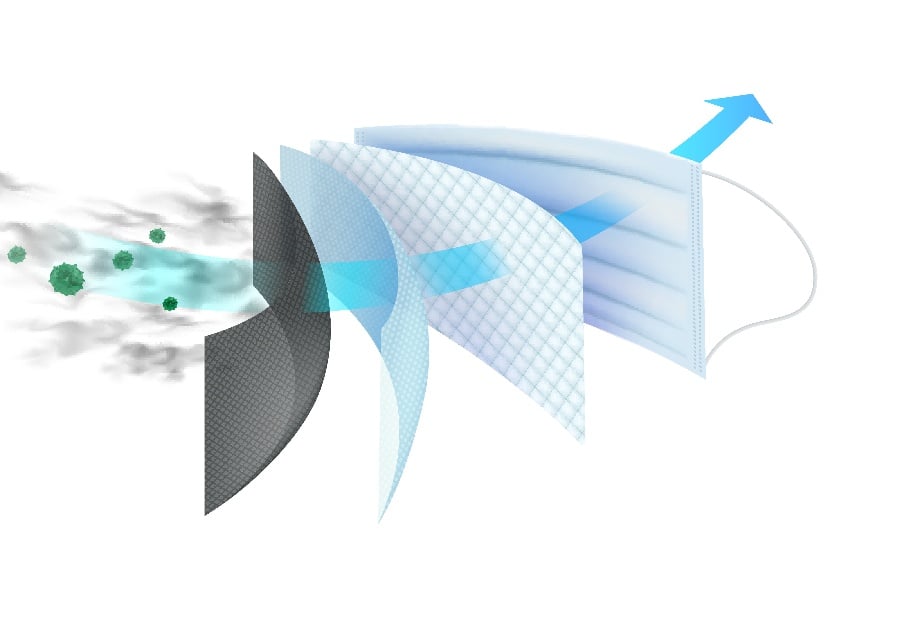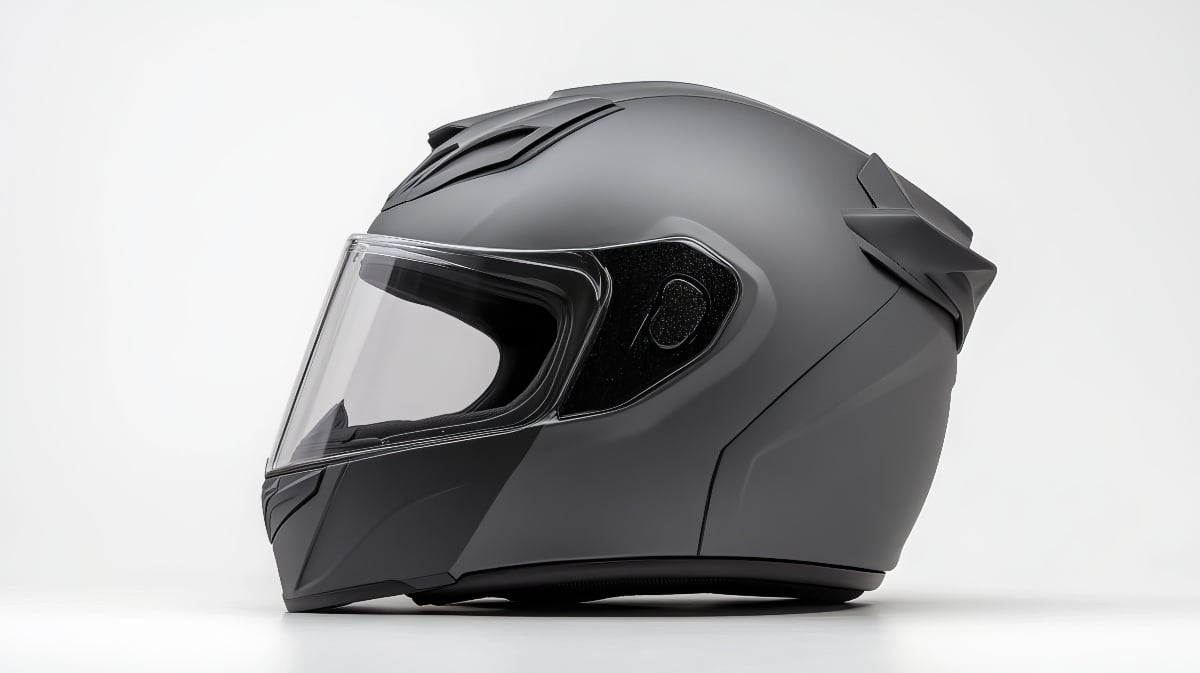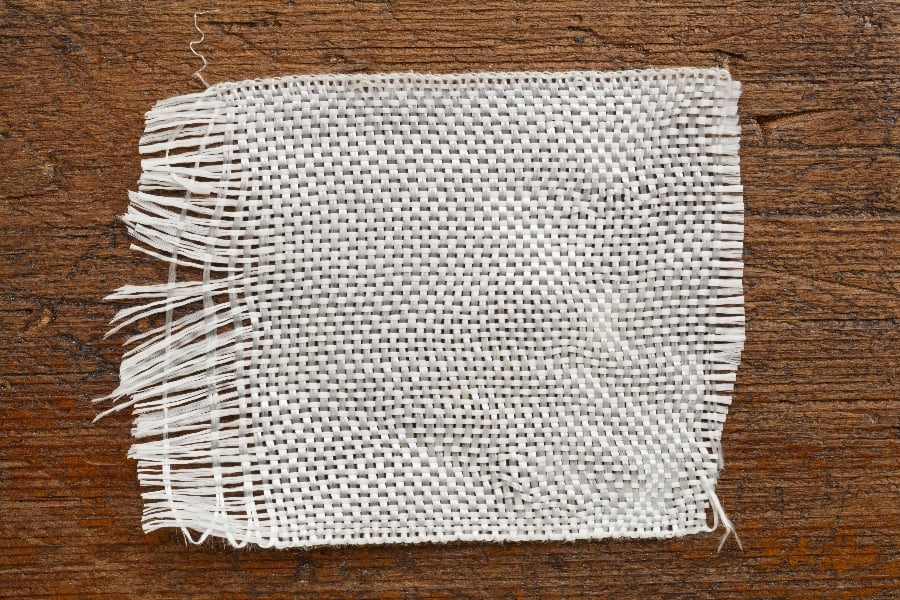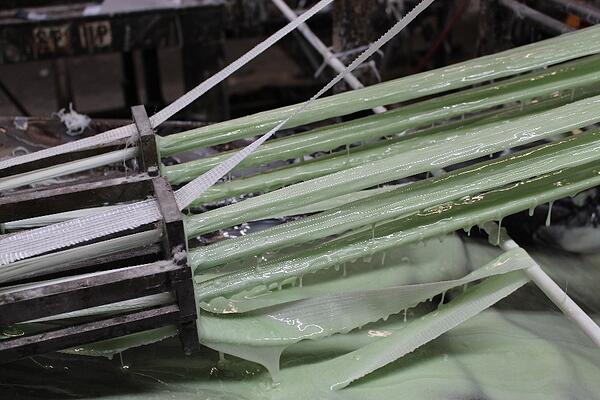
Here at Tencom, we specialize in manufacturing and customizing fiber reinforced polymer (FRP) composites for various industries around the world.
Creating FRP composites may seem complicated, but once you understand the process it is relatively simple.
In this post, we will breakdown the process of manufacturing and customizing pultruded products.
Ingredients
If we go by the textbook definition, a composite is an object that is made up of many different parts or elements. FRP composites are no different.
The main ingredients used to create pultruded products include the following:
- Fiber Reinforcements
- Resins
- Fillers
- Additives/Modifiers
There are several different fibers that can be used to create reinforcements. Generally, the most used materials are aramid, natural, glass, and carbon. Glass is the most commonly used material, and aramid is the rarest.
Have you heard of bulletproof vests? Those are made with aramid. Other materials that can be used for reinforcements are milled fiber, woven roving, or thermoformable mats.
Resin is what makes the FRP composites so strong. Its main purpose is to transfer stress evenly amongst the fiber reinforcements. Essentially, it is like a multifunctional glue that not only holds the fibers together, but it also protects those fibers from damage.
There are two types of resins used in the process of manufacturing FRP composites. The first is a thermoplastic resin. It gets soft when it’s heated, and it can be easily molded into almost any shape.
Although it’s extremely malleable when in a semi-liquid state, it gets rigid when it’s cooled. The second type of resin is known as a thermoset resin. This type of resin has a very low melting point and turns to liquid quickly.
Fillers are used to enhance the performance of the FRP composite. In other words, fillers add special properties to the pultruded products that wouldn’t have been included otherwise.
Calcium sulfate, alumina trihydrate, calcium carbonate, and hydrous aluminum silicate are all examples of fillers that are commonly used during the pultrusion process. They help reduce shrinkage and enhance the overall performance of the FRP composite.
Additives and modifiers take things to the next level and will have characteristics such as fire resistance, emission control, electrical conductivity, viscosity control, low shrink, and even air release.
Additives can also be used to customize FRP composites. They can be used to create a corrosion-resistant surface, while modifiers like clay, fumed silica, colorants, inhibitors, catalysts, and other agents are used to create custom designs.
FRPs are commonly used in construction, aerospace, telecommunications and marine sectors.
The Pultrusion Machine
A pultrusion machine is also needed to complete the process. While there are many different machines out there, each one has several things in common.
They all consist of the following elements:
- Rovings
- Continuous Strand Mat
- Guide Plates
- Resin Impregnator
- Surfacing Veil
- Preformer
- Curing/Forming Die
- Touchscreen Control Panel
- Reciprocating Pullers
- Cut-Off Saw
The Pultrusion Process
First, the continuous filament mats are used to hold the fiber reinforcements. The braided or woven fibers are delivered in rolls and positioned to move into the guide plates. The guide plates are used to situate the unrolled mats and roving just before the resin bath.
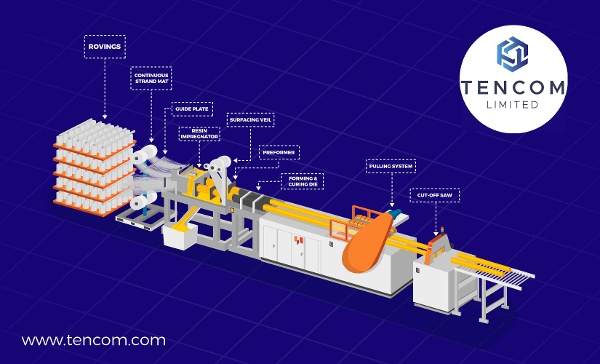
A resin bath typically consists of liquid resin, fillers, pigments, wetting agents, and catalysts. As the fiber is pulled through the resin bath, it is completely saturated and shaped into a flat sheet.
The next phase begins with the preformer. This is known as the reshaping phase. The wet-out fiber reinforcements are molded to the shape of the die cavity before they enter the die.
This part of the process takes a while to complete, and it doesn’t require any interaction from operators. While this step is important, some pultrusion machines are designed to skip it entirely and use the process of resin injection instead.
Now, it’s time to begin the curing process. Once the saturated fiber reinforcements enter the die, they are squeezed and compacted to mold to the exact shape of the die.
To leave the FRP composites with a smoother surface, the die cavity is coated in a chrome plating. The processing time for curing depends on the size of the composite. For example, thick pultruded products will take longer to cure than thinner ones.
The next phase is the cooling stage. As the newly formed composite exits the die cavity, it is extremely hot. Using natural convection, the composite is cooled down. This is usually done by cold air or water.
Finally, the last stage of the pultrusion process is to cut the FRP composites. The machines do this as the production line is moving. Using a cut-off saw, the FRP composites are sliced into the correct sizes.
Adding a Logo
Aside from injecting colorants into the resin during the pultrusion process, there is another way to create custom FRP composites.
Surface treatments like pre-printing text and graphics can easily be done. Embedding a company logo into the surfacing veil is an added step to ensure that your products are labeled and easy to keep track of.
The Finished Product
Once the entire pultrusion process is complete, the finished product will be quite impressive. These lightweight, low maintenance FRP composites are resistant to weather, corrosion, heat, impact, and UV damage.
They are non-magnetic, non-conductive, and help to reduce noise. In addition, these pultruded precuts are very strong and last a lot longer than conventional materials such as wood, steel, and aluminum.
Tencom Specialties
Our experts here at Tencom have over 22 years of experience working in the FRP composites industry. We create everything from fiberglass rods, channels, angles, tubes, poles, and bars to custom pultruded products with specialty resins.
We can even create tree stakes for your landscape, driveway markers, window reinforcements, and sporting goods.
Aside from fiberglass, we can also work with aramid to create kevlar products and carbon. We offer various custom shapes including rods, tubes, rectangles, squares, ovals, half-rounds, tees, and more.
We can also pre-drill your finished pultruded products. Get in touch with our experts today to receive a quote.

